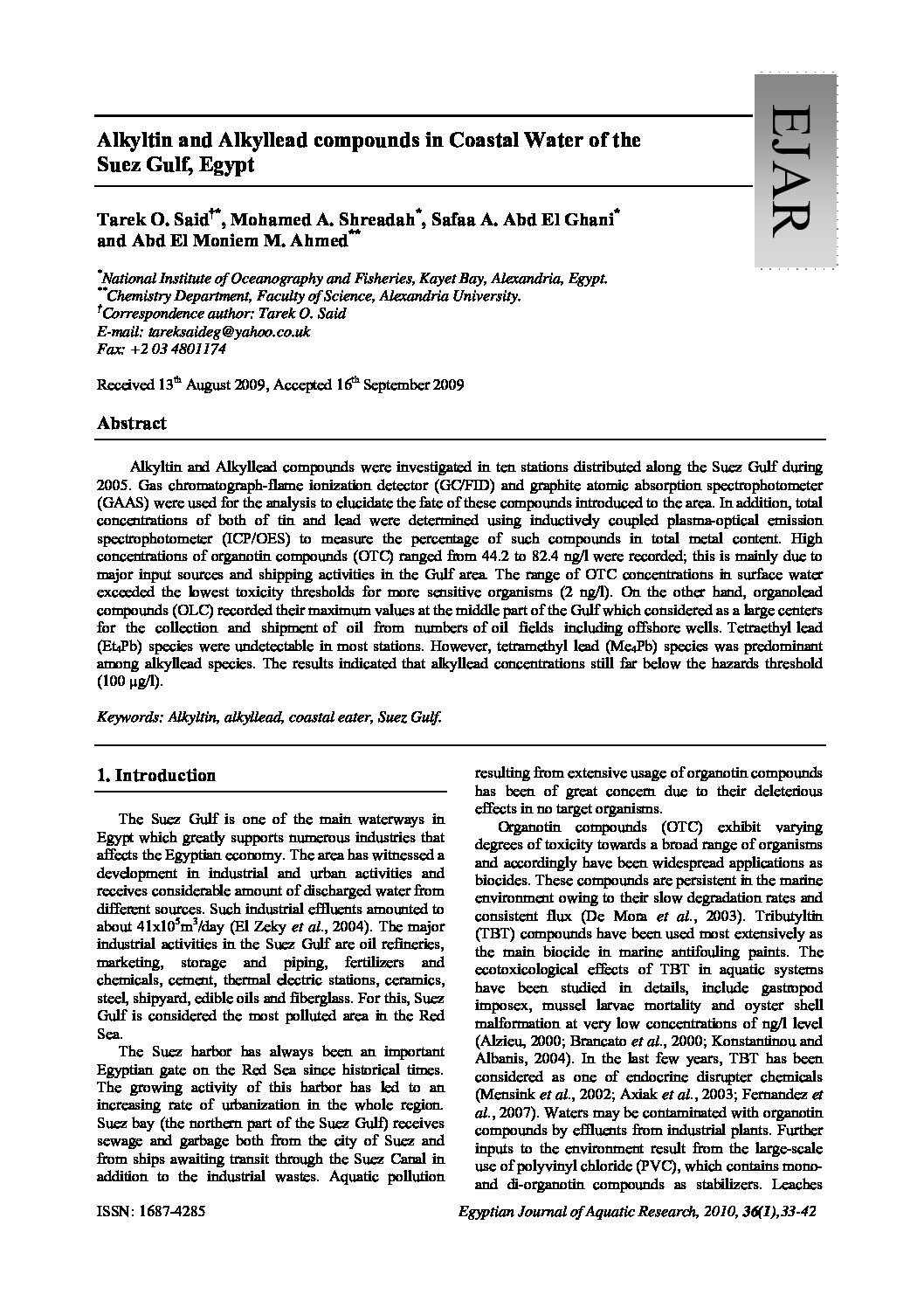Categories
vol-36Abundance and ecological observations of the Black-lip pearl oyster,
Pinctada margaritifera (L.) (Bivalvia: Pteriidae), in Red Sea
Egyptian Waters
*Fatma A. Abdel Razek1
; Mohamed M. Abou Zeid 2 andEl Sayed A. E. Hamed 1
1National Institute of Oceanography and Fisheries, Alexandria, Egypt
2 Faculty of Science, Al-Azhar University, Cairo, Egypt
*Corresponding author: [email protected], Tel: (+20)0106620222, fax: (+20)034801174,
(+20)034801553
Received 19th July 2010, Accepted 10th August 2010
Abstract
The pearl oyster, like other shell fish and many other marine animals (e.g., abalone), has a long history of
exploitation throughout the world. The black lip pearl oyster Pinctada margaritifera (Linnaeus, 1758) has long been
an important species in the Indo-Pacific region including the Red Sea. During the last decade in Egypt, the
collection of shells of pinctada increased to a great extent causing a sharp decrease in the density of the animals in
the reefs. This decrease motivated the Egyptian Environmental Affairs Agency (EEAA) to add P. maragaritfera to
the list of the threatened species by (IUCN). The present survey covered more than 600 km of the proper coast of the
Egyptian Red Sea and the studied species was recorded in 29 stations out of the surveyed 65 which demonstrate the
current distribution of 44.6% of the sites. Mostly found in the sub-tidal zone to depth of about 15 m, with habitat
comprises dead corals and weeds (64%). Both sandy and living coral habitats included lower percentage being 14
and 20% respectively. The species were found in considerable numbers in the northan and southern part of the
surveyed area, however, the density is one individual per 31.33 m2
in northern area while it was one individual per
10.7 m2 in southern area and the area in-between them along the coast had very small numbers of individual due to
the high fishing potential. The number recorded of this internationally distributed species during the present study in
considered very low compared to other areas of the world.
Keywords: Distribution, ecology, P. margaritifera, Red Sea, Egypt.







